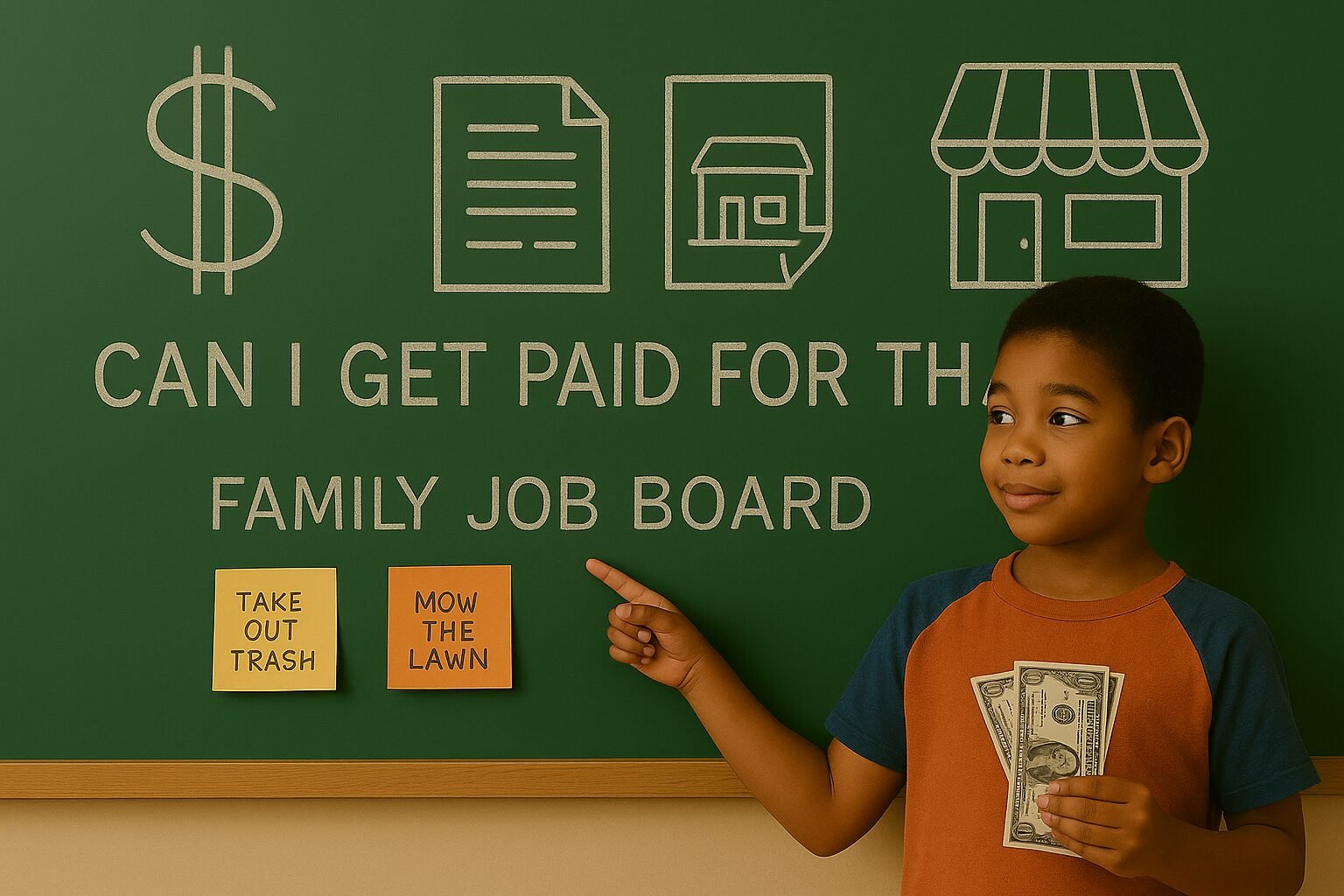I Spent It All! Helping Kids Slow Down and Spend with Purpose
Kids are asking about Bitcoin. This guide helps parents and educators explain cryptocurrency with confidence, not confusion.


Last Saturday, Jordan (age 8) asked his mom a question that stopped her mid-coffee sip:
“If I fold all the laundry, do I get five bucks?”
It wasn’t the laundry that surprised her. It was the tone, like he was negotiating a freelance contract.
Welcome to the new age of allowance culture, where kids are curious, creative, and more aware of money than ever. From making slime to selling lemonade, more kids are wondering, “Can I earn money too?” And parents are wondering when to say “yes,” when to say “no,” and how to teach the value of earning without creating a mini CEO who won’t make their bed without a W-2.
Let’s break this down in a way that works for both grown-ups and kids.
Earning means doing something helpful, creative, or valuable in exchange for money. You give your time or energy, and you get something back.
Not everything kids do needs to come with a paycheck (hello, brushing teeth), but connecting effort to reward is a powerful lesson, especially when kids feel empowered to contribute.
Yes! But with your help. If your child wants to sell friendship bracelets, art, or homemade treats, it’s a great time to talk about:
· Cost of materials
• Fair pricing
• What happens if they don’t sell everything
A helpful script:
“Some chores are just part of being in our family. We all pitch in. But there are extra jobs, like bonus projects, you can get paid for if you want to earn more.”
Here’s a simple way to frame it:
“That’s almost enough for one snow cone or you could save up for something bigger.”
Use real-world comparisons to help kids connect effort to reward.
This exercise didn’t come from a parenting book. It came from real-life questions kids were asking:
Instead of turning the home into a work farm or turning every task into a transaction, this activity creates a healthy balance. It gives kids a way to connect effort with earnings, while keeping everyday responsibilities, like brushing teeth or feeding the dog, part of being a team.
The goal isn’t to monetize childhood. It’s to meet their curiosity with structure, guide their motivation in age-appropriate ways, and teach them how the world of earning really works.
Normalize conversations about saving, spending, and even mistakes. Kids don’t need every detail, but they benefit from hearing your thought process.
Final Thought
Kids are naturally curious and eager to feel grown-up. By giving them small, age-appropriate ways to earn and manage money, you’re building lifelong confidence. Plus, it turns those “Can I get paid for that?” moments into teachable (and sometimes adorable) wins.
At Kash Kids, we equip children with the tools to make smart money choices for life. Through hands-on lessons in financial literacy, we help kids build confidence, form healthy habits, and understand the value of every dollar. When children learn how money works early, they grow up ready to lead, save, invest, and thrive.
Kids are asking about Bitcoin. This guide helps parents and educators explain cryptocurrency with confidence, not confusion.
Kids are asking about Bitcoin. This guide helps parents and educators explain cryptocurrency with confidence, not confusion.